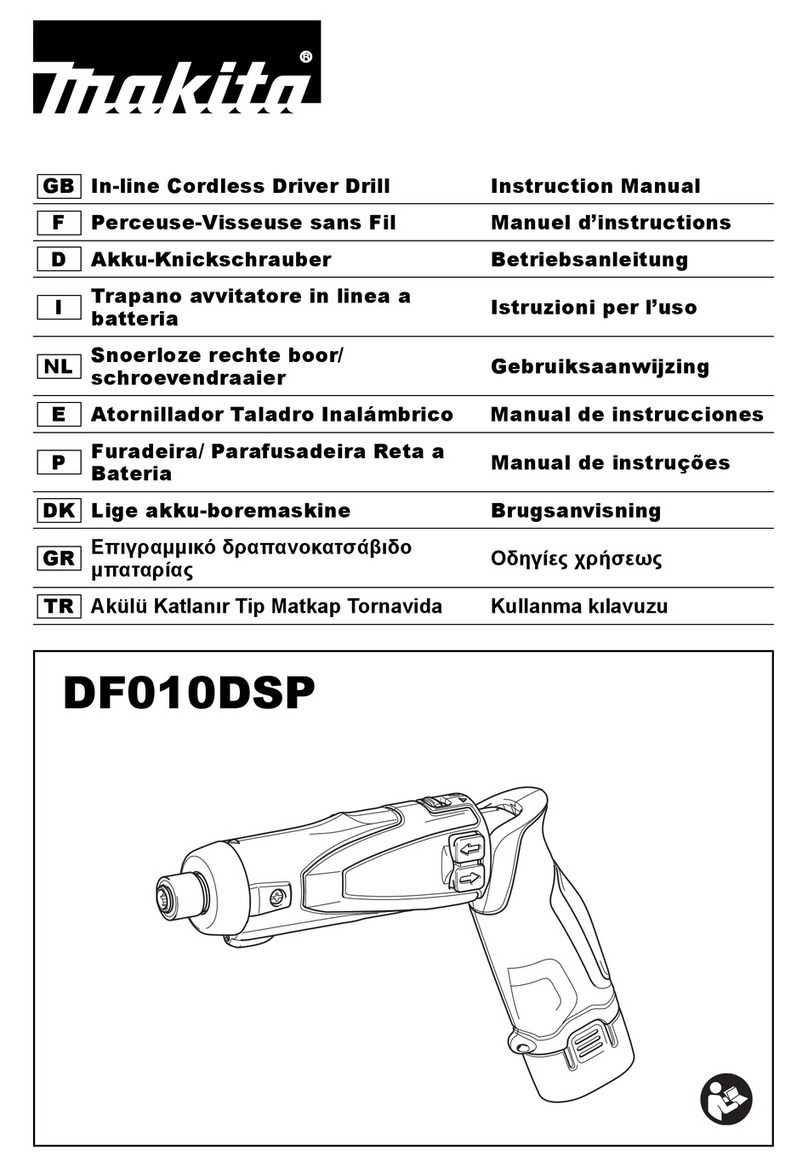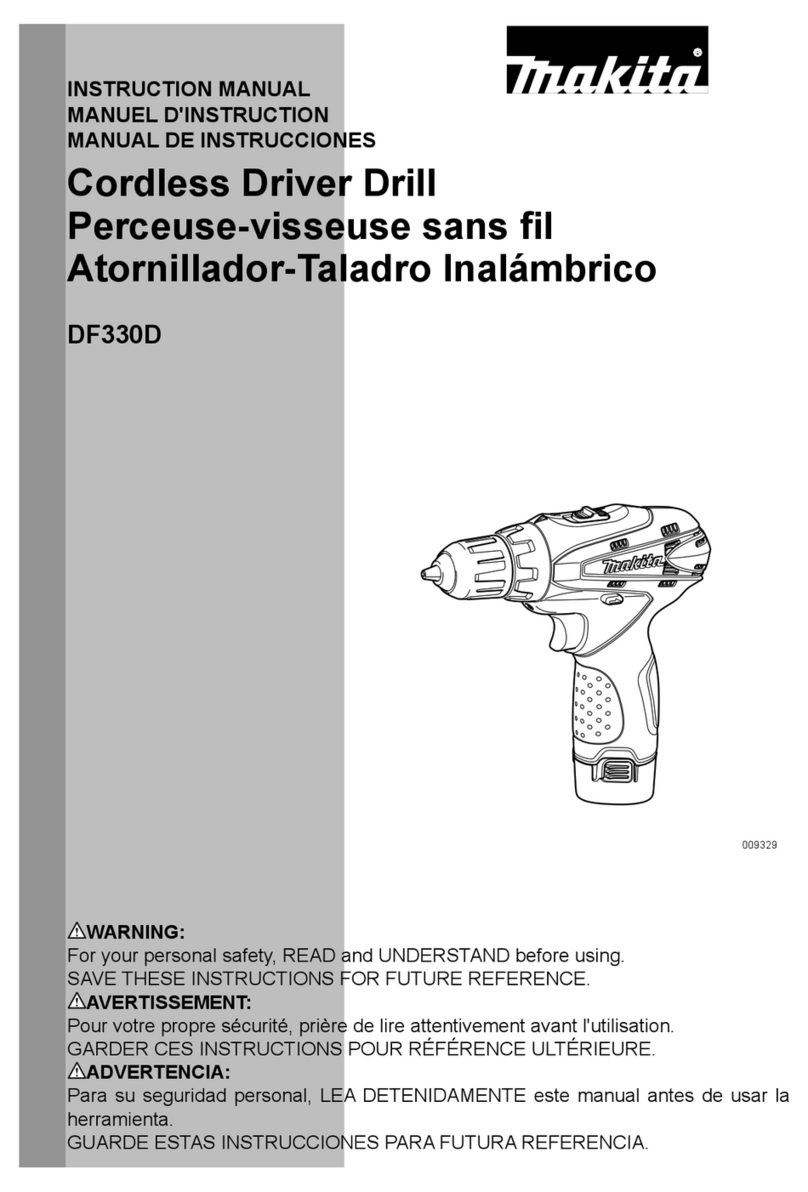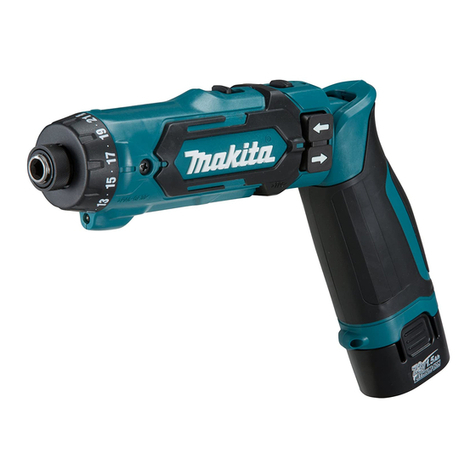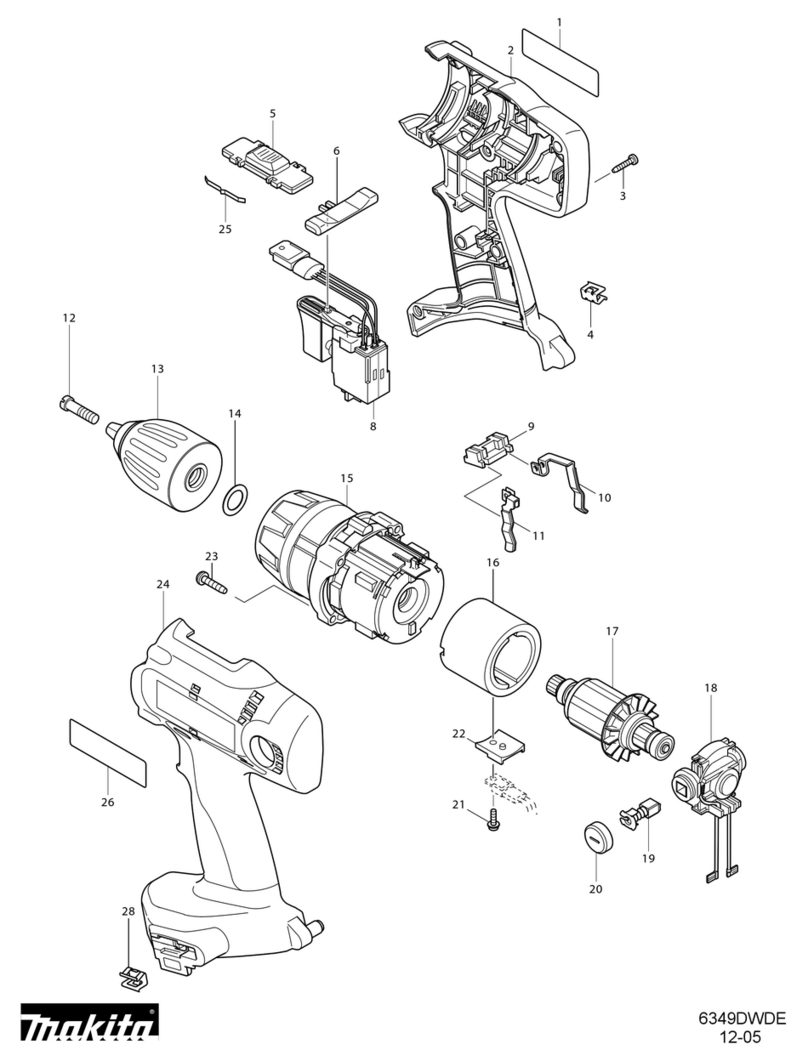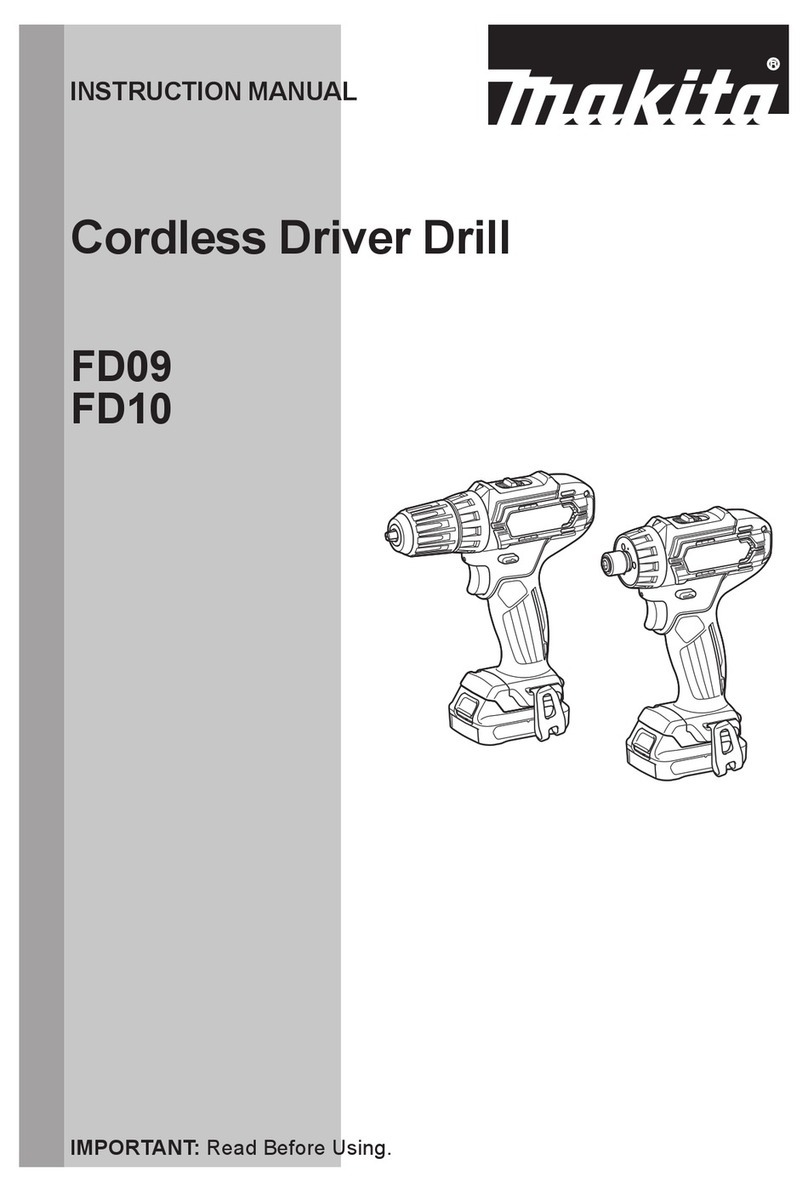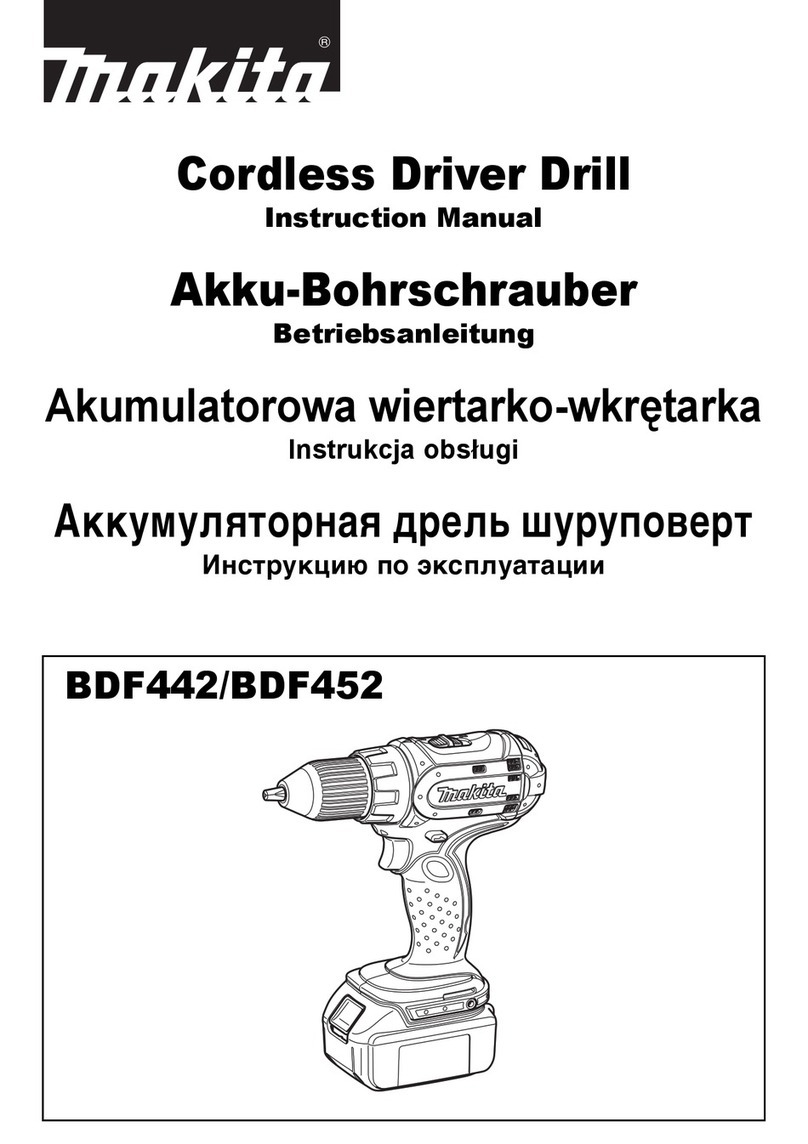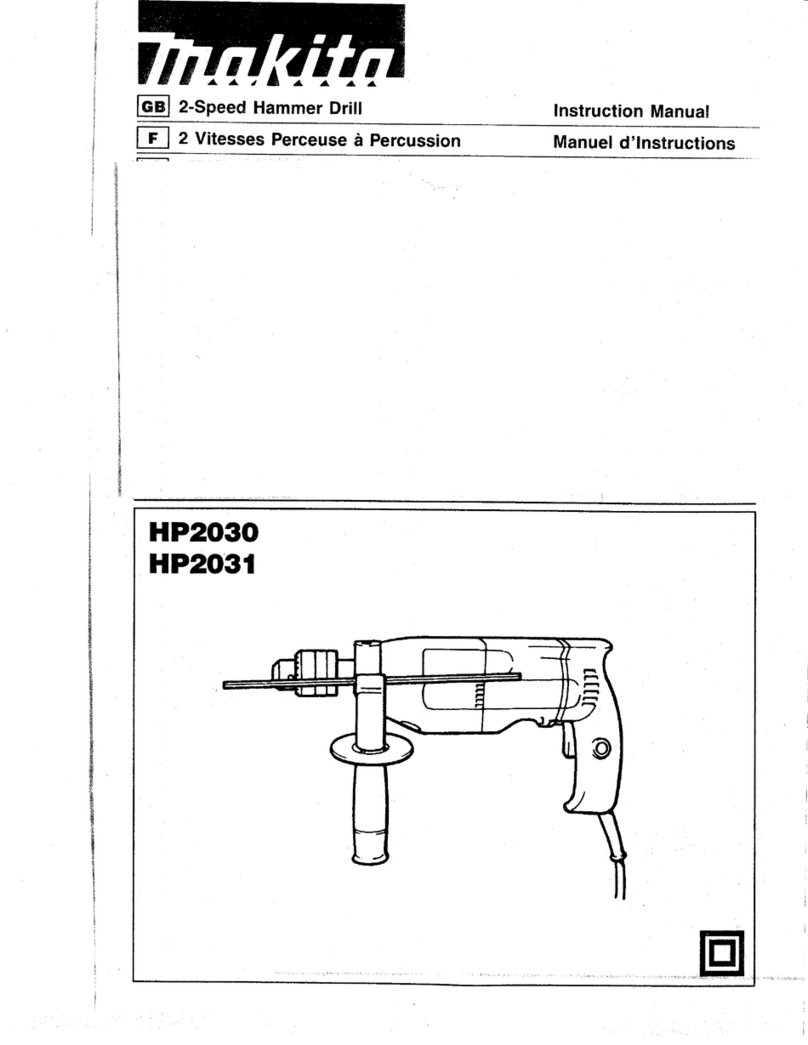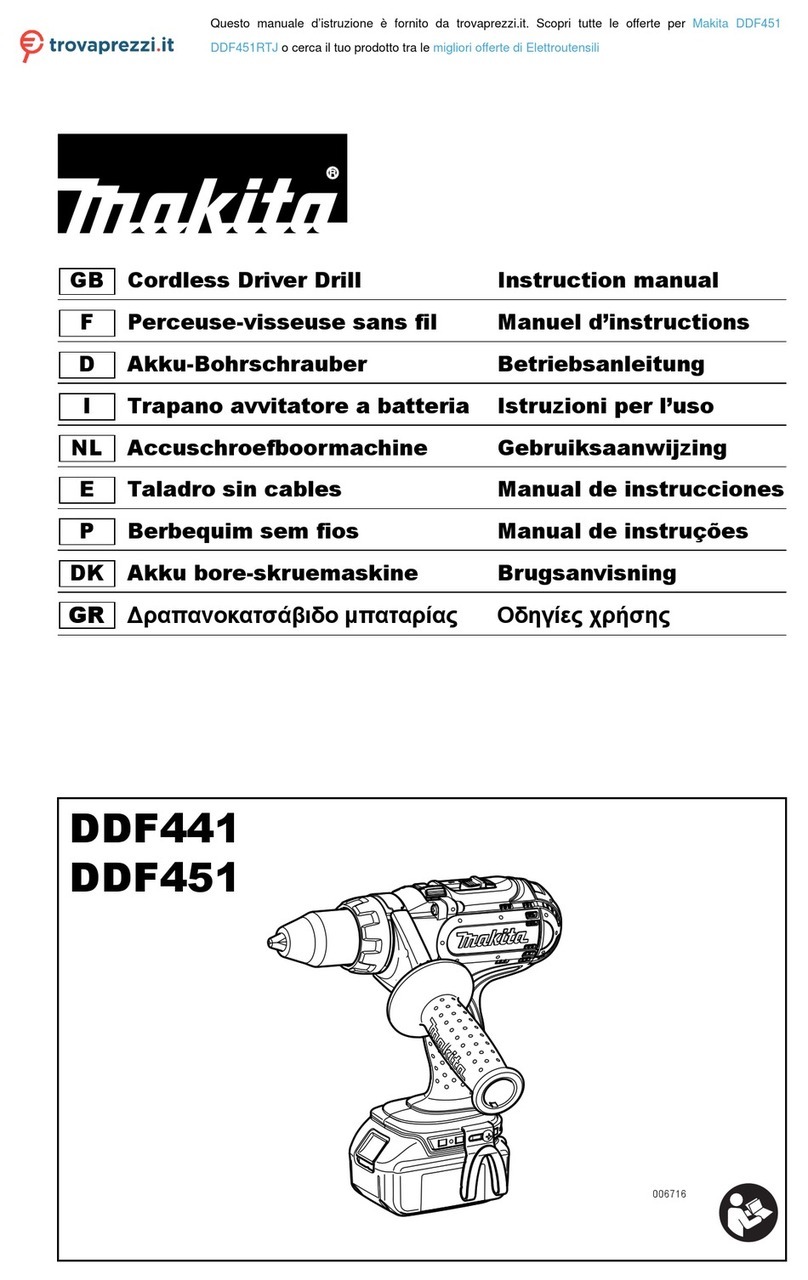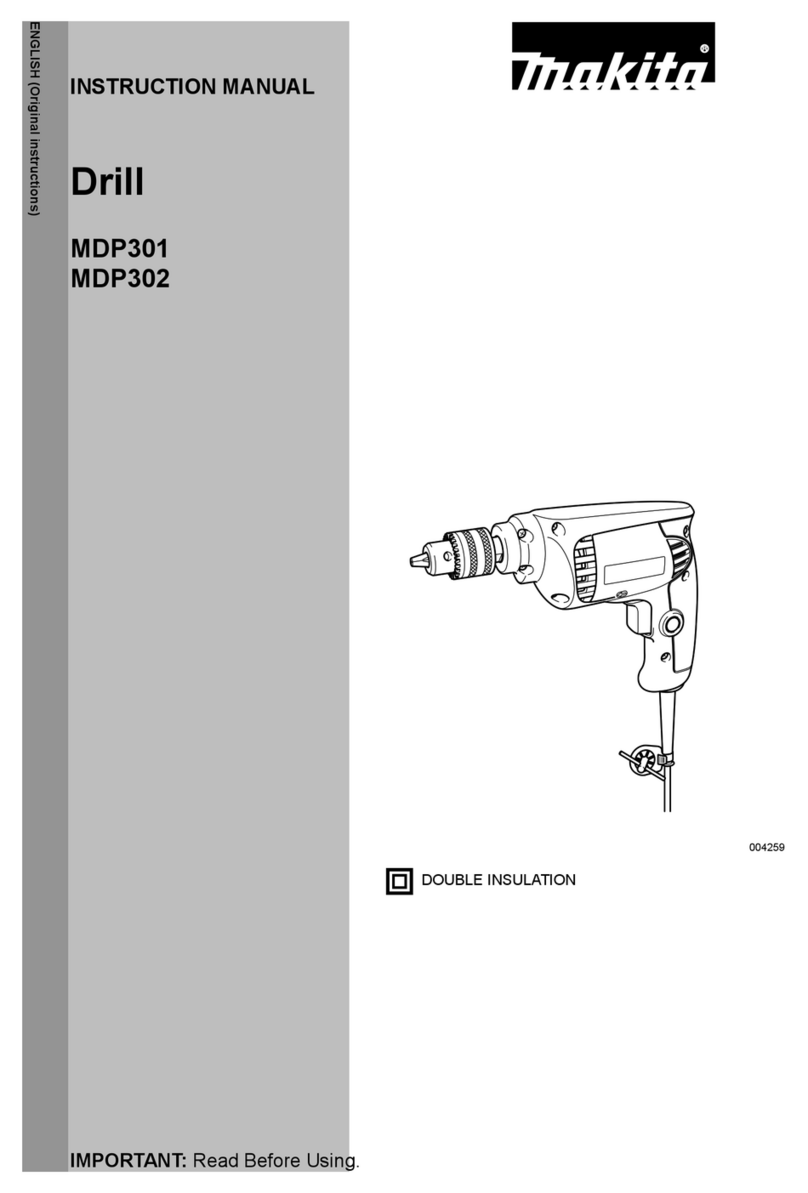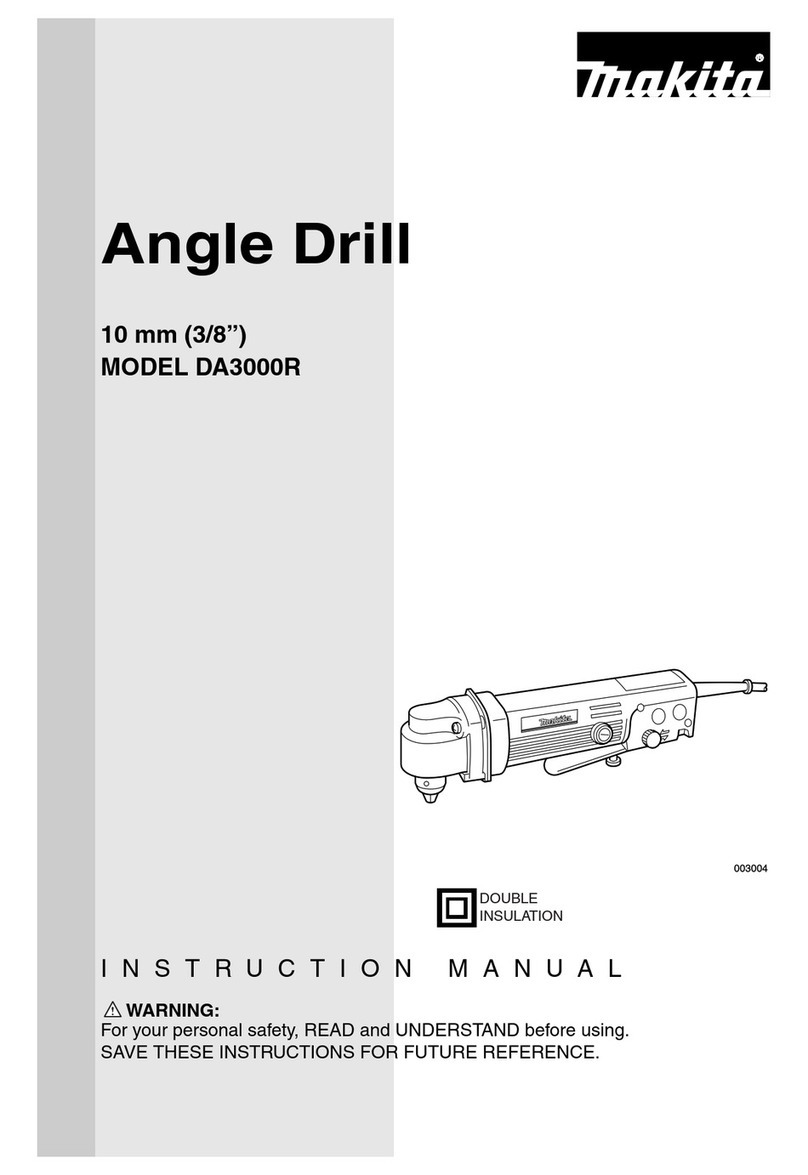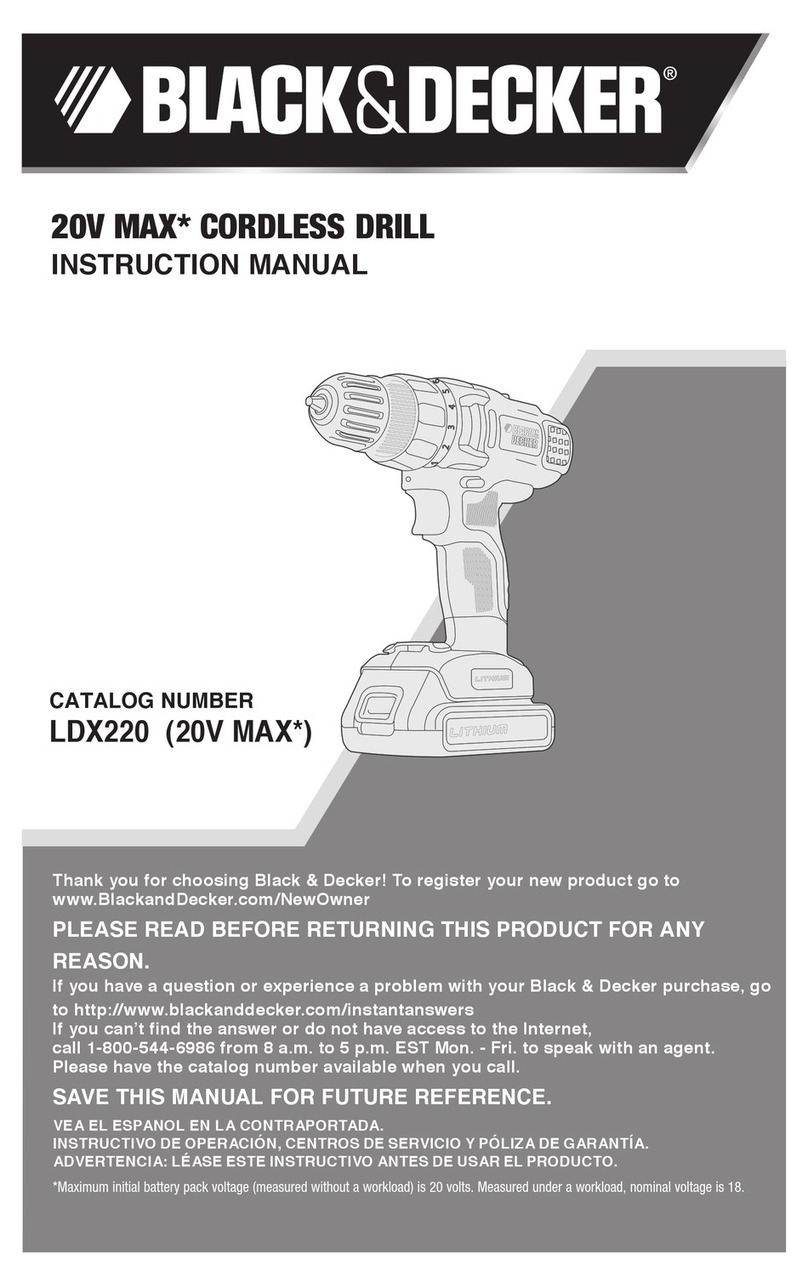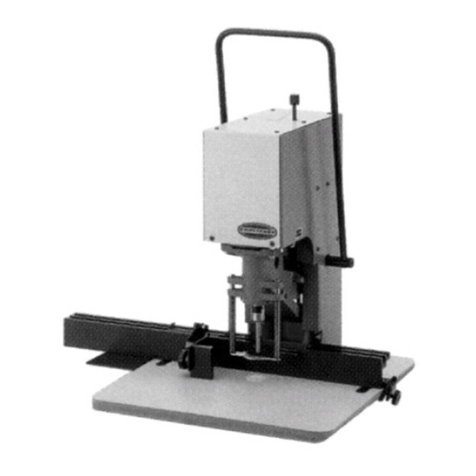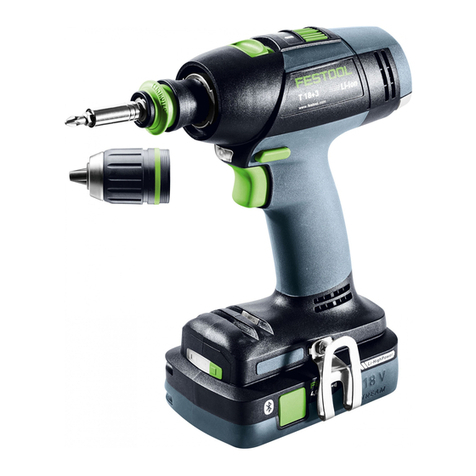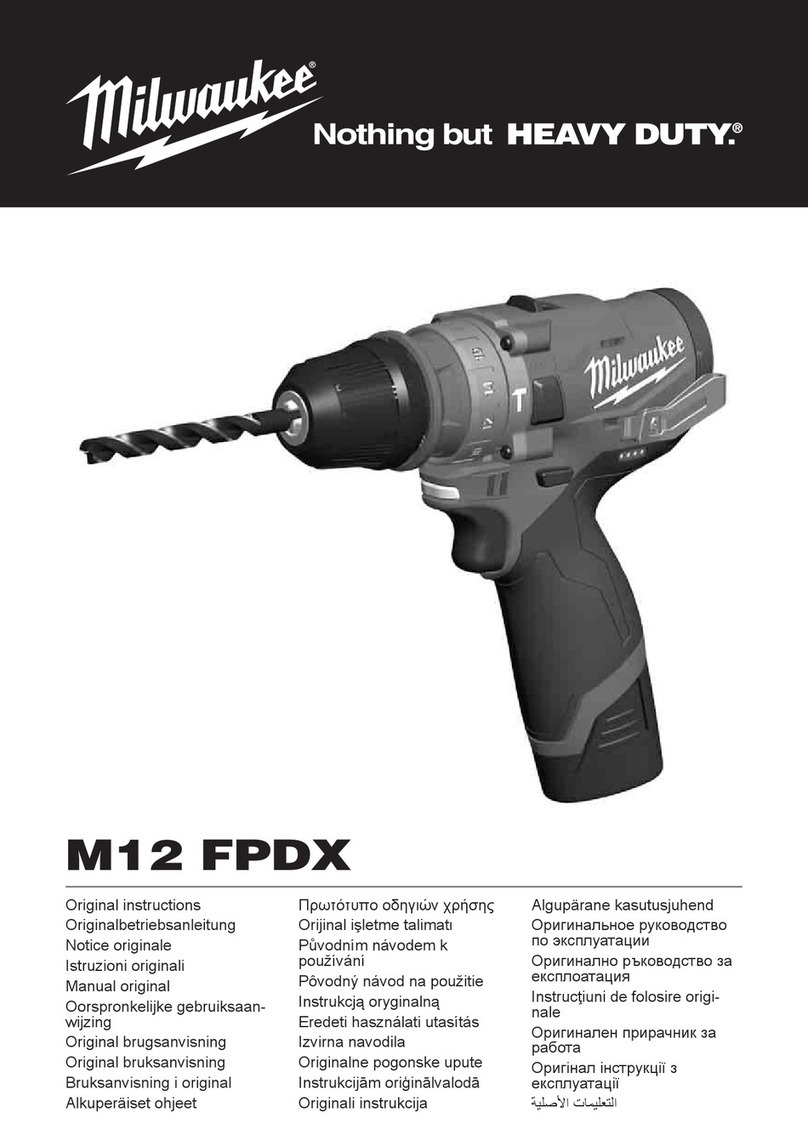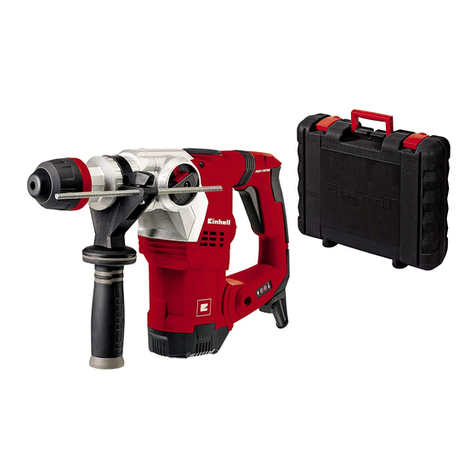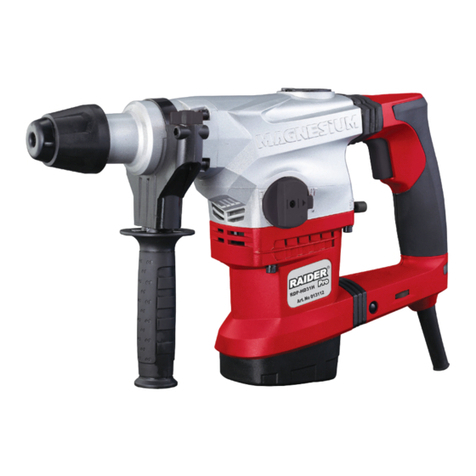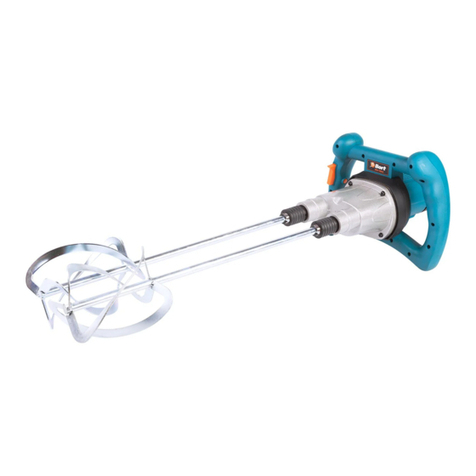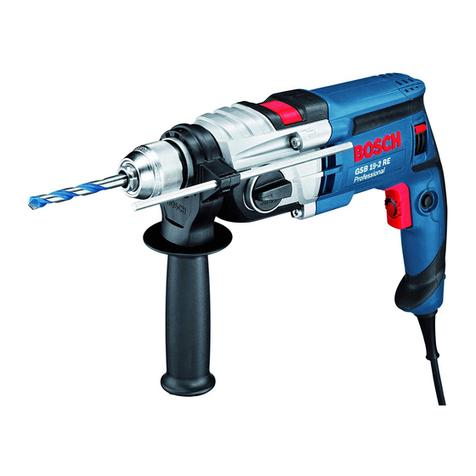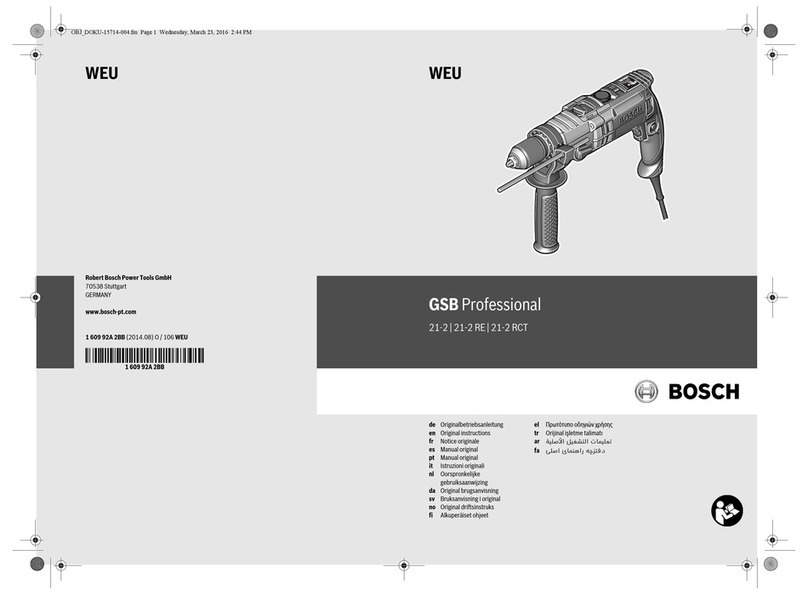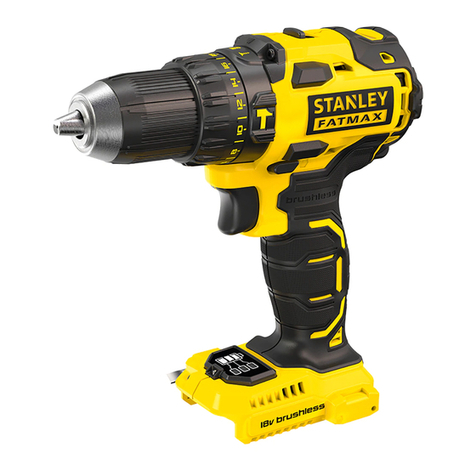IMPORTANT SAFETY INSTRUCTIONS
WARNING: When usingelectric tools, basic safety precautionsshould always be followed
to reduce the risk of fire, electricshock, and personal injury, includingthe following:
READ ALL INSTRUCTIONS.
1.
KEEP WORK AREA CLEAN. Cluttered areas and benches invite injuries.
2.
CONSIDER WORK AREA ENVIRONMENT. Don't use power tools indamp or wet
locations. Keep work area well
lit.
Don't expose power tools to rain. Don't use tool
inpresence offlammable liquidsor gases.
3.
KEEP CHILDREN AWAY. All visitors should be kept away from work area. Don't
let
visitors contacttool or extensioncord.
4.
STORE IDLE TOOLS. When not in use, tools should be stored indry, and highor
locked-upplace
-
out of reach of children.
5.
DON'T FORCE TOOL.
It
will do the job better and safer
at
the rate for which
it
was intended.
6.
USE RIGHT TOOL. Don't force small tool or attachment to do
the
job of
a
heavy-
duty tool. Don't use tool for purpose not intended.
7.
DRESS PROPERLY. Don't wear
loose
clothingor jewelry. They can
be
caught in
moving parts. Rubber gloves and non-skidfootwear are recommendedwhen working
outdoors. Wear protectivehair coveringto contain long hair.
8.
USE SAFETY GLASSES. Also use face or dust mask if cutting operation
is
dusty.
9.
DON7 ABUSE CORD. Never carry tool by cord or yank
it
todisconnect from re-
10.
SECURE WORK. Use clampsor
a
vise
to holdwork.
It's
safer than usingyour hand
11.
DON'T OVERREACH. Keep proper footing and balance
at
all
times.
12.
MAINTAIN TOOLS WITH CARE. Keep tools sharp and clean for better and safer
performance. Follow instructions for lubricating and changing accessories. Inspect
tool cords periodically and if damaged, have repaired by authorized service facility.
Keep handlesdry,
clean,
and free from oiland grease.
13.
DISCONNECT TOOLS. When not inuse, before servicing, and when changingacces-
sories, such
as
blades, bits, cutters.
14.
REMOVE ADJUSTING KEYS AND WRENCHES. Form habit of checking to
see
that keysand adjustingwrenches are removedfrom tool before turning
it
on.
15.
AVOID UNINTENTIONAL STARTING. Don't carry plugged-intool with finger on
switch. Be sure switch
is
OFF when plugging in.
16.
OUTDOOR USE EXTENSION CORDS. When tool
is
used outdoors, use only exten-
sion cords intendedfor use outdoors and
so
marked.
17.
STAY ALERT. Watch what you are doing, use common sense. Don't operatetool
when you are tired.
18.
CHECK DAMAGED PARTS. Before further use of the tool,
a
guard or other part
that
is
damaged should
be
carefully checkedto determinethat
it
will operate proper-
ly
and perform
its
intended function. Check for alignmentof moving parts, binding
of moving parts, breakage of parts, mounting, and other conditions that may affect
its
operation. A guard or other part that
is
damaged should be properly repairedor
ceptacle. Keep cordfrom heat, oil, and sharp edges.
and
it
frees both hands to operatetool.
2

